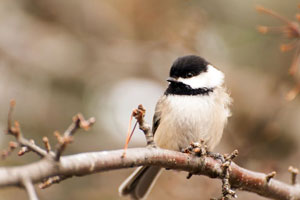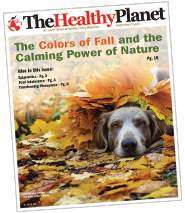
By Sarah Wilson,
Healthy Planet Staff Writer
How do birds stay warm in the winter?
How do they have the energy to migrate south?
Fatty foods. And a lot of them. Fat has more calories than carbohydrates or protein. It fuels birds flying south and warms those hunkering down in the cold.
How seriously do some migrating birds take this need for fat? They actually shrink some of their internal organs to make room. This makes sense because they need to have more fuel for the journey and stay as light as possible. This adaptation is how some of our birds can fly over the Gulf of Mexico without eating a bite.
What about birds staying here all winter? They are equally impressive. The black-capped chickadee (weighing in at half an ounce) can keep themselves at 100 degrees in 0-degree weather. How? By eating up to 35% of their body weight a day. (For the 180-pound human, that would be 63 pounds of food.)
How can you help our birds?
Grow native plants that produce fat-rich, fall-ripening native fruit and seed, which can be 20-45% fat. For comparison, Ted Drewes frozen custard is 16% fat.
Here are a few to research:
- Southern arrowwood – 41.3% fat,
- Gray dogwood – 39.9%,
- Northern spicebush -33.2%,
- Echinacea – 33%,
- Virginia creeper – 23.6%
What about all the berries on invasive honeysuckle? Aren’t those just as good?
No. Amur honeysuckle berries have a paltry 3% fat. Every year, more than 2 billion birds disappear during migration. The causes are not entirely understood, but with so much of our land packed full of invasive and non-native plants, I have to wonder how many birds simply starve.
Do feeders help? Yes, I fill feeders and put out suet blocks all winter. I consider them necessary soup kitchens for our struggling birds. But I also grow as many native plants as I can. I want my yard to be a buffet of foods for birds to choose from.
We all can make a difference; one native plant at a time.
Want more info?
Go to Audubon’s Plants for Birds https://www.audubon.org/plantsforbirds
Local Resources include:
Greenscape Gardens: https://www.greenscapegardens.com/
River City Natives: https://www.rivercitynatives.com/
Wild Ones St Louis Chapter (largest chapter in the US, full of friendly, helpful people): https://stlwildones.org/


